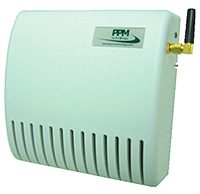
INDOOR air quality (IAQ) relates to a number of environmental factors inside a building that can impinge on the health, comfort, or work performance of the building’s occupants.
Monitoring IAQ is vital because it is estimated that the average person spends 90% of their time breathing “indoor air”.
Poor IAQ is a contributing factor to both short and long-term health issues, these can lead to decreased productivity, absenteeism, and in some cases possible litigation.
Common symptoms associated with poor indoor air quality can include eye, nose, and throat irritation, headache, nausea, dizziness, and fatigue. In some cases exposure to indoor air pollution can lead to acute and chronic respiratory illnesses.
Sick Building Syndrome (SBS) is said to occur when many building occupants experience symptoms associated with acute discomfort that are usually relieved when leaving the premises.
SBS typically occurs in large open-plan offices with automated heating, ventilation and air conditioning systems.
What causes SBS?
There are many factors that can lead to an unhealthy indoor air environment, including: poor or inadequate ventilation; unsuitable temperature and humidity; airborne and chemical pollutants; ozone (O3) emissions from printers and photocopiers; high concentrations of Total Volatile Organic Compounds (TVOCs); formaldehyde (CH2O); and pollution from external sources (e.g. vehicle fumes coming into the building).
In order to accurately understand a building’s indoor air quality, it is advised to simultaneously monitor various indoor air quality parameters including gases, temperature and humidity.
PPM Technology’s range of Indoor Air Quality (IAQ) monitoring instruments includes the Wireless IAQ Profile Monitor which can contain sensors for a maximum of seven customer-specified IAQ parameters.
The Mini IAQ Profile Monitor (pictured, above) can contain a maximum of five sensors. Both these instruments send the collected IAQ data wirelessly to the control pc/laptop in real-time; a large number of units can be networked together to enable accurate monitoring of an entire building.
The PPMonitor software enables the data to be viewed graphically. It produces reports and statistical data, runs schedules and alarm functions in addition to notifications for more effective and economical building management.
Variants of the IAQ sensor are available for the monitoring of: temperature, humidity, formaldehyde, glutaraldehyde, nitrogen dioxide, carbon monoxide, carbon dioxide, sulphur dioxide, TVOCs, ozone, ammonia, methane, chlorine, water, smoke and motion (motion sensors). Other sensor options may be available on request.
For further information and data sheets visit www.ppm-technology.com.
Image – The Mini IAQ Profile System from PPM Monitoring gives a visual representation of indoor air quality in buildings







